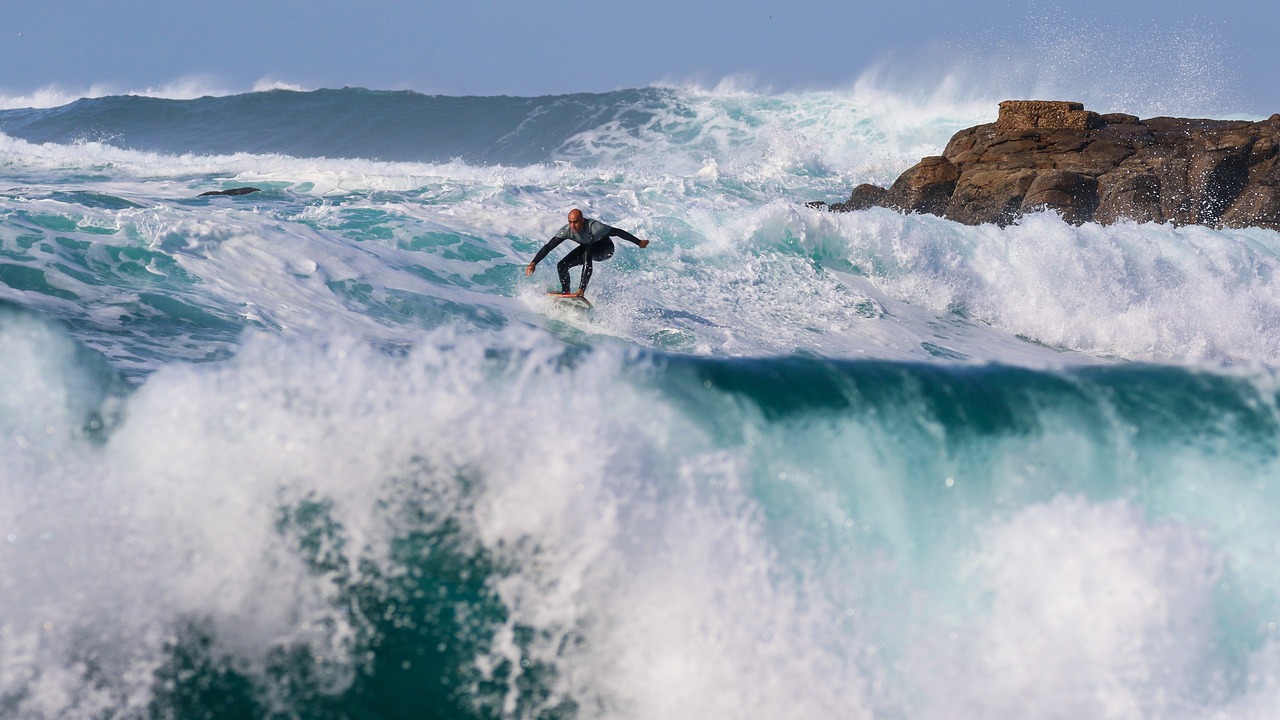Welcome to the wonderful world of surfing! Whether you’re an experienced surfer or just starting, there’s something special about catching the perfect wave. Living life on the wave is a lifestyle with its own joys, challenges, and experiences.
We’ll discuss the basics of how to surf, how to stay safe while on surf holidays, and how to make the most of your time out on the water. Let’s get started!
What is surfing?
Surfing is an ancient sport that involves riding waves on a surfboard. It is believed to have originated in the Polynesian islands, with ancient Hawaiians carving out pieces of wood to ride the waves for transportation.
Surfing has become one of the most popular water sports in the world. Surfing involves catching a wave and balancing yourself on the board while riding it. As the wave takes you forward, you use your feet to maneuver the board and catch more waves.
The goal is to ride the wave as long as possible and then return to the beach with a big smile. Whether you are a beginner or a seasoned surfer, there is always something new to learn and experience while surfing.
How to Surf
Learning to surf is an exciting journey that begins with some basic instruction. Whether you’re a complete beginner or have been catching waves for years, mastering the skill of surfing requires practice and dedication.
Before you hit the water, it’s important to know the basics. Start by familiarizing yourself with the surfing terminology and the parts of a surfboard. Then review the basic techniques for paddling, positioning yourself on the board, and popping up.
Once you understand the fundamentals, find a spot that works for your level. Beginners should stick to flat, easy waves like those on shore breaks and beach breaks. As you progress, you can challenge yourself by tackling steeper, faster waves like those in point breaks and reef breaks.
When you’re ready to get in the water, ensure you are aware of your surroundings and equipped with the appropriate safety gear (including a leash, wetsuit, and helmet). When you paddle out, look around and assess the waves before committing to one. Ensure you enter the water safely and avoid obstructions like rocks and other swimmers.
Once you’re up and riding, practice keeping your balance and stance on the board. Focus on controlling the speed of your board using both your body weight and your arms. Additionally, make sure to maintain good posture and always keep an eye out for potential hazards.
Finally, take time to enjoy the ride. Relax into the wave and stay focused on where you’re going. Most importantly, remember to have fun! With dedication, patience, and practice, you’ll be ready to hit the waves like a pro.
The benefits of surfing
Surfing has been known to have a wide variety of positive benefits, both mental and physical. For starters, it’s an excellent form of exercise. The constant paddling and riding of waves help tone muscles and build strength.
It’s also an amazing way to get some fresh air and get outdoors. Being in the ocean is calming and energizing, providing an escape from the hustle and bustle of everyday life.
Surfing can also be an effective stress reliever. Catching waves requires focus and concentration on the present moment, which can help you forget about your worries and be in the moment. It also encourages creativity and problem-solving as you figure out how to maneuver your board on the wave. This can help keep your mind sharp and alert while still providing a great form of entertainment.
For those looking for a spiritual connection, surfing can provide that too. Being out in nature and the presence of powerful waves can be a humbling experience that allows us to feel connected to something larger than ourselves. And it’s a great way to connect with friends and family – sharing an activity like surfing brings people together uniquely.
It is an activity that can bring joy to your life while providing numerous health benefits. It’s a great way to stay active, have fun, and appreciate nature simultaneously.
How to choose the best surfing spots in the world
Choosing the right surfing spot can make or break your experience on the waves. If you want to ensure you’re hitting the best breaks in the world, there are some important factors to consider.
- Waves
First and foremost, research the waves. Get a good understanding of the different types of waves, swells, currents, and tides in the area. This will help you decide if the spot suits your level of experience and which board to take.
- Weather
Then, check out the weather. Ensure you know of any upcoming storms that could cause dangerous conditions. Additionally, be aware of any restrictions or regulations on particular spots. Many beaches have time limits or require special permits for surfing.
- Accessibility
You’ll also want to take into account accessibility. Surf spots can be remote, so planning how to get there is important. Consider things like parking, camping fees, and overnight accommodations.
- Location
Try to get an overall sense of the vibe at the spot. Talk to locals and other surfers who know the area well. They can provide valuable insights and even tips on approaching certain waves.
By taking all these factors, you can find the perfect surfing spot that meets all your needs. So don’t forget to do your homework – it could be the difference between an epic session or a wipe-out.
Conclusion
Surfing is an amazing sport that has been around for centuries and continues to evolve daily. It can be incredibly rewarding and a great way to enjoy the outdoors and make lasting memories. With the right knowledge, preparation, and dedication, anyone can learn to surf and find their waves of joy.
Whether you’re a beginner or an experienced surfer, there are always new tricks and tips to learn and perfect to make the most of your time on the water. So don’t be afraid to grab your board and get out there – you never know what kinds of unforgettable experiences await.


